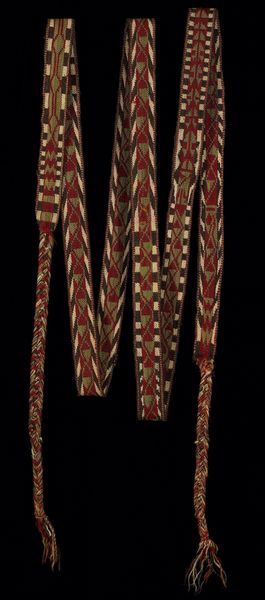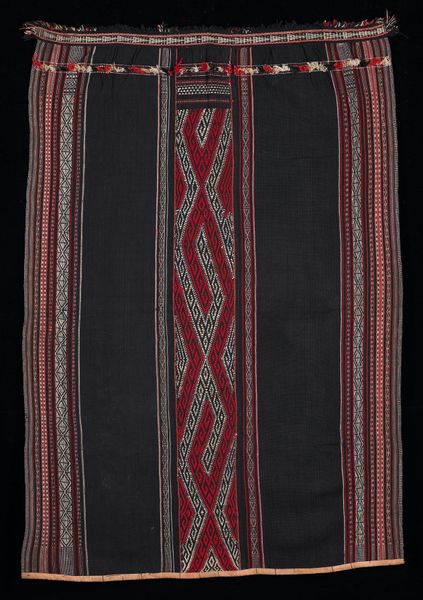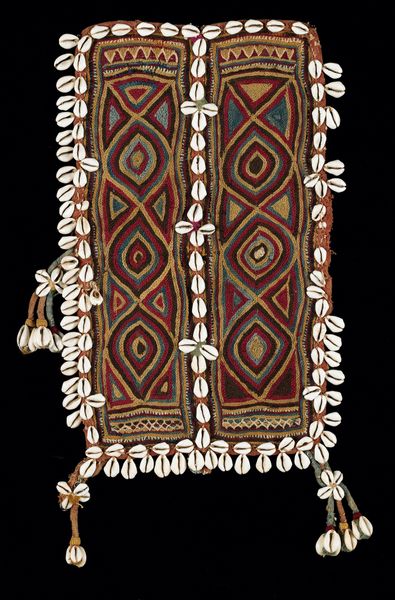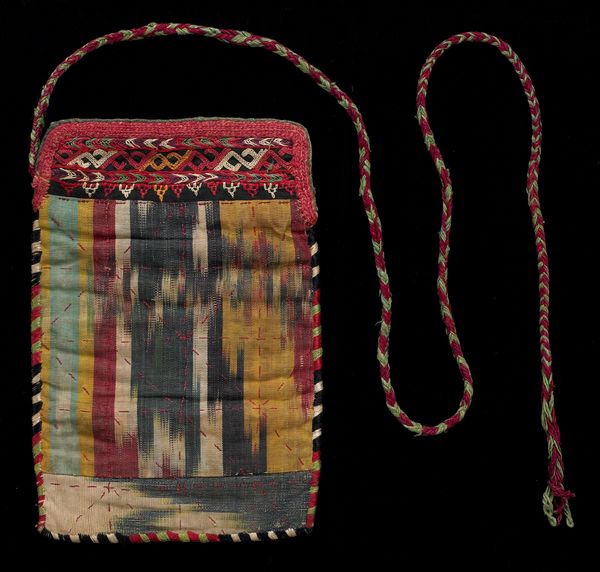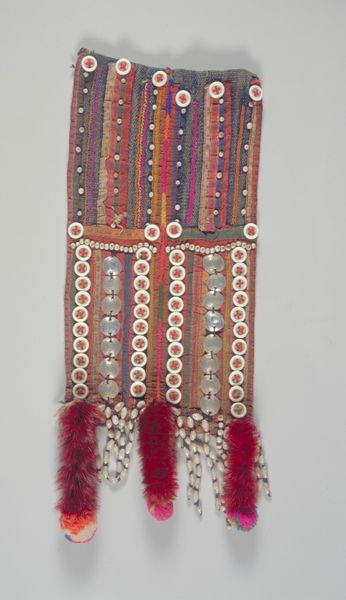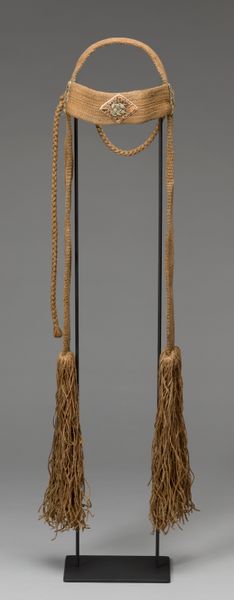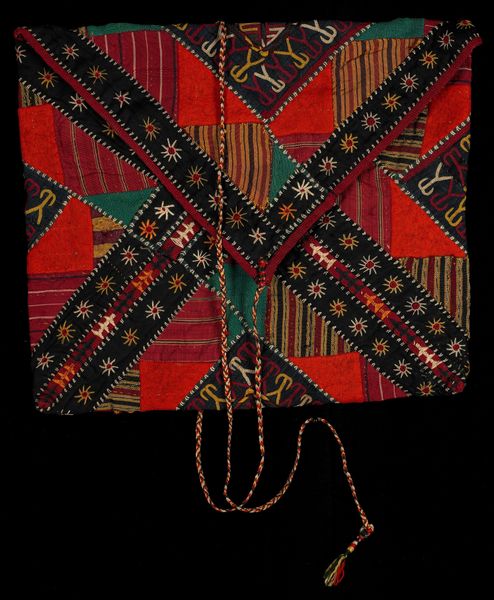
fibre-art, weaving, textile
#
fibre-art
#
weaving
#
textile
#
geometric
#
decorative-art
Dimensions: 129 x 1 3/4 in. (327.66 x 4.45 cm)
Copyright: Public Domain
Editor: This woven belt, dating from the early 20th century, by an anonymous maker, really caught my eye. It has these beautiful geometric patterns and playful tassels. What do you see in this piece? Curator: Well, considering the belt’s presence within a museum context, it becomes crucial to understand its journey and the narratives we construct around Indigenous craftsmanship. How does displaying this utilitarian object as art affect our understanding of both? Editor: That’s a great question! It seems to elevate it, but maybe at the cost of erasing its original purpose? Curator: Precisely. This tension highlights how museums often shape and sometimes distort cultural understanding. This piece is a clear example of “pattern and decoration” meeting Indigenous art. To consider the social dynamic, where was this displayed when it was produced compared to where is it displayed today? Editor: Good point, and knowing the maker is anonymous complicates it even more, doesn’t it? Whose story are we telling? Curator: Indeed. Anonymity pushes us to analyze the politics of imagery itself, irrespective of the artist's biography. How might this piece challenge conventional art historical narratives that center individual genius? Editor: So, this belt, seemingly simple, opens up this whole conversation about art institutions and cultural representation. It gives the design and history behind an everyday object importance beyond just utility. Curator: Precisely. Seeing beyond aesthetic value allows us to consider its broader cultural impact. It's more than just something that holds up your pants!
Comments
No comments
Be the first to comment and join the conversation on the ultimate creative platform.
